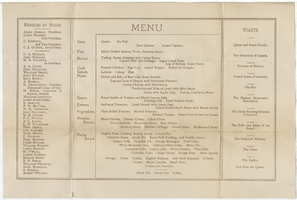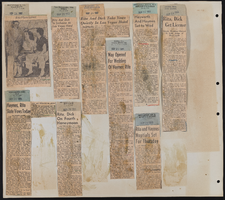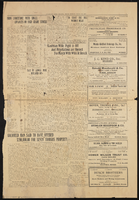Search the Special Collections and Archives Portal
Search Results
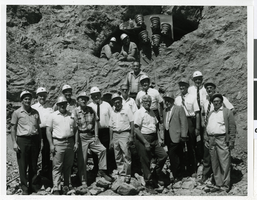
Photograph of Key federal, state and contractor representatives who were on hand when the mole broke through the tunnel, Las Vegas, Nevada, 6-26-69
Date
Archival Collection
Description
Image
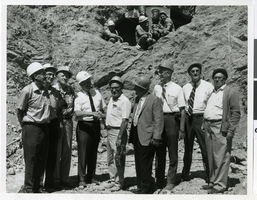
Photograph of Key federal, state and contractor representatives who were on hand when the mole broke through the tunnel, Las Vegas, Nevada, 6-26-69
Date
Archival Collection
Description
Image
The Production Company Audiovisual Collection
Identifier
Abstract
The Production Company Audiovisual Collection consists of commercials, advertising, and political campaigns from approximately 1965 to 1995 created by The Production Company, a television production company founded by Thomas “Bob” Patrick in Las Vegas, Nevada. The collection consists of primarily 16 mm film and video formats such as VHS, U-Matic, Betacam, open reel, Type C, and quadruplex. The videotapes and films in this collection represent advertising and marketing for hotels and casinos, entertainment companies, politicians, and local businesses located in Las Vegas, Nevada.
Archival Collection
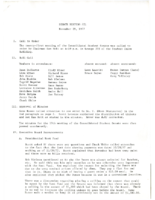
Meeting minutes for Consolidated Student Senate, University of Nevada, Las Vegas, November 29, 1977
Date
Archival Collection
Description
Text

Transcript of interview with Freddie Glusman by Barbara Tabach, October 29, 2015
Date
Archival Collection
Description
In this interview Glusman discusses his early memories of being raised in Vancouver, Canada and how he ended up in Las Vegas. He reflects on how he first got his start in the town and his early dealings with casinos and their owners while he was working as a carpet and drapery salesman and while working for Fabulous Magazine. Glusman explains how he started his restaurant and tells about the people he encountered while doing this that where significant to both the Jewish community and Las Vegas as a whole. He recounts stories that include such people as Meyer Lansky, Al Sachs, and Moe Dalitz.
Text

Interview with William Byron Beam, January 20, 2005
Date
Archival Collection
Description
Text

James Dean Leavitt oral history interviews: transcript
Date
Archival Collection
Description
Oral history interviews with James Dean Leavitt conducted by Claytee D. White on September 27 and October 4, 2022 for the Boyer Early Las Vegas Oral History Project. In this interview, Leavitt recalls his role in establishing a medical school at the University of Nevada, Las Vegas (UNLV), now known as Kirk Kerkorian School of Medicine. Leavitt was elected to the Board of Regents in 2004 while Jim Rogers was interim Chancellor of the Nevada System of Higher Education (NSHE), and he suggested the creation of an ad hoc committee Health Science Center Committee. In 2009, Leavitt became Chairman of the Board of Regents, Dan Klaich became Chancellor, and in the following year, Dr. Mark Doubrava joined the board. In May 2014, the planning dean was hired, Dr. Barbara Atkinson, and the UNLV School of Medicine was officially established on August 22, 2014.
Text

